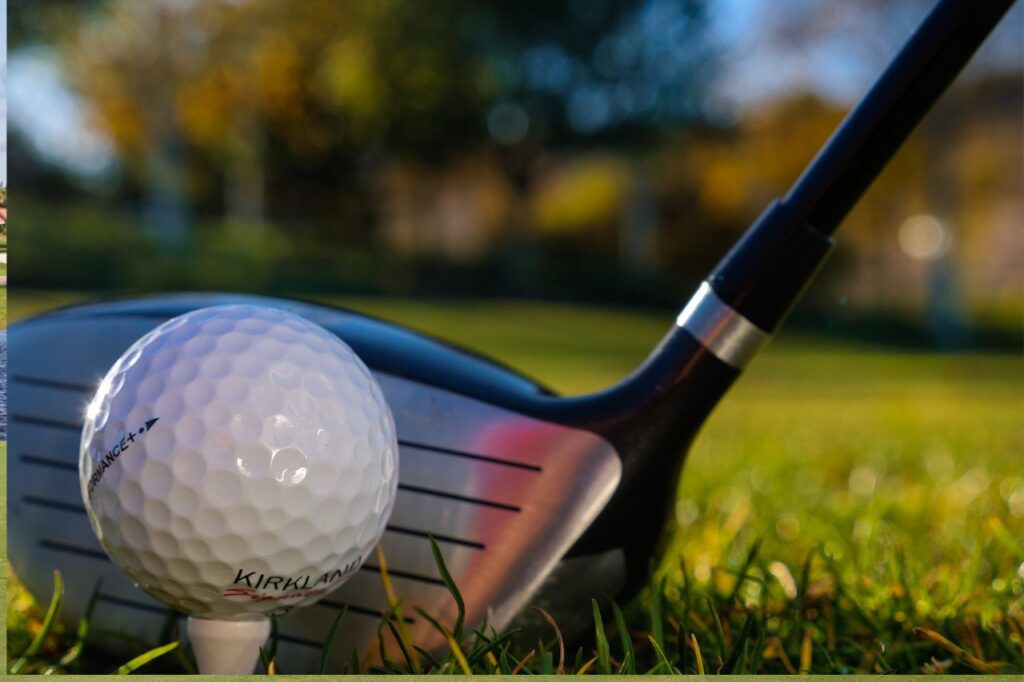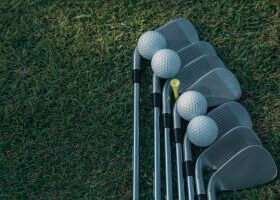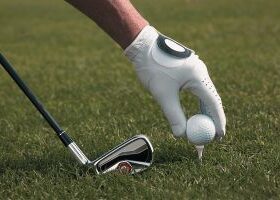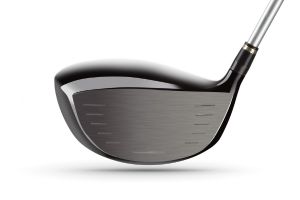

What is the Difference Between a Draw and a Fade?
Draw:
A draw is a golf shot that begins to the right (for right-handed players) and softly loops back to the left, finishing on or near the target line.
A slightly inside-to-out swing path and a closed clubface at impact are required.
Draws are frequently utilized to increase distance, navigate around obstructions, and provide a lower ball flight with a more excellent roll.
Fade:
On the other hand, a fade begins to the left (for right-handed golfers) and slowly bends to the right, finishing on or near the target line.
It demands a swing path from the outside to the inside and an open clubface at impact.
Fades are frequently utilized to improve accuracy, control shots around hazards, and strike approach shots to right-side pins.
Understanding the distinctions between draw and fade shots enables golfers to shape their shots tactically, modify their game to different conditions, and enhance overall course performance.
Learn how shot accuracy affects your scores in golf, whether you’re fading or drawing.
How Shot Shape Affects the Flight Path of the Ball:


The swing path and the clubface angle at contact influence shot form.
The swing path for a fade is outside-to-inside, which means the clubhead approaches the ball from a route to the left of the target line.
The clubface is somewhat open or shooting to the left of the target upon contact.
In comparison, the swing path for a draw is inside-to-outside, with the clubhead reaching the ball from a route to the right of the target line.
The clubface is slightly closed or pointed to the right of the target during contact.
Because of the changes in swing path and clubface angle, the ball curves in the desired direction, resulting in the fade or draw shot form.
The choice between fade and draw depends on your clubs. Explore club lofts and shot shaping.
Common Myths About Fading and Drawing Shots:
- Fades Always Lose Distance:
It is a common misperception that fades permanently to lose distance compared to draws.
While pulls provide more roll, the overall distance of a shot is determined by elements including as swing speed, launch angle, and striking quality.
2. Draws Are Always Better:
It is widely held that a draw is the best-shot form for all golfers. However, shot form preferences differ amongst players, and what works for one may not work for another.
Both fades and draws have benefits, and the scenario and the skills of the particular player determine the choice.
3. Shot Shaping Is Just for Advanced Golfers:
Some golfers feel that shot shaping is just for advanced players.
Naturally, golfers of all skill levels may benefit from learning to manage their ball flight and understanding shot structure.
Shot shaping can improve course management and assist golfers in avoiding dangerous places.
4. Extreme Swings Are Required for Shot Shaping:
It’s a common misperception that shaping shots necessitates wild swings or severe methods.
Changes to the swing path, grip, and setup can generate the desired shot form. Working with a golf coach can assist golfers in efficiently learning these modifications.
How Do You Start Shaping Golf Shots?


Golfers naturally fade or draw the ball when they do not aim to hit it straight. Accept and use your shot shape to your advantage.
If you tend to fade the ball, look for situations when both a straight stroke and a fade can yield favorable results.
If you regularly slice the ball, consider aiming further left for consistency. Avoiding random misses on both sides makes establishing a safe shooting location tough.
Before attempting to hit purposeful draws or fades, concentrate on increasing your consistency.
Understanding and appreciating your shot form allows you to make intelligent decisions on the golf field and play to your strengths.
How Do You Hit a Fade in Golf?
Hitting a fade in golf may help you handle difficult circumstances and provide variety to your game. Here’s the easiest way to strike a fade:
- Alignment: For right-handed golfers have a wide stance and aim slightly left of the target. This alignment promotes the form of a fade shot.
- Grip Adjustment: For right-handed golfers, make a grip adjustment by moving your hands slightly to the left of the club. It involves moving your hands counter-clockwise on the grip, which slightly opens the clubface at the address.
- Swing Path: Focus on swinging from slightly outside to slightly inside the goal line during the swing. It indicates that your swing path should approach the ball from the left of the target line (for right-handed golfers).
- Clubface Control: Keep the clubface slightly open upon impact. It indicates that at the moment of impact, the clubface should be positioned slightly to the left of the target (for right-handed players).
- Balanced Finish: Finish your swing with a smooth and balanced follow-through. Maintain a consistent body rotation, allowing the club to release during impact naturally.
- Practice and Adjust: Experiment with the amount of grip modification, swing path, and clubface control to fine-tune your fade shot. Spend time on the driving range practicing this shot form to create consistency and confidence.
How Do You Hit a Draw in Golf?
A basic approach for hitting a draw in golf:
- Alignment: For right-handed golfers have a slightly closed stance and aim slightly right of the target.
- Grip Adjustment: To encourage a closed clubface at the address, rotate your hands slightly to the right on the club (for right-handed players).
- Swing Path: For right-handed golfers, swing from slightly inside to slightly outside the target line to produce a right-to-left ball flight.
- Clubface Control: Maintain a slightly closed clubface at contact while aiming slightly right of the goal (for right-handed golfers).
- Body movement: To improve the draw form, encourage aggressive body movement during the swing.
- Balanced Finish: Finish your swing with a flat and smooth follow-through, enabling the club to release naturally.
- Practice and Adjust: Experiment with grip changes, swing path, and clubface control to achieve the correct balance for your draw shot. Practice regularly to create consistency.









Leave a Reply